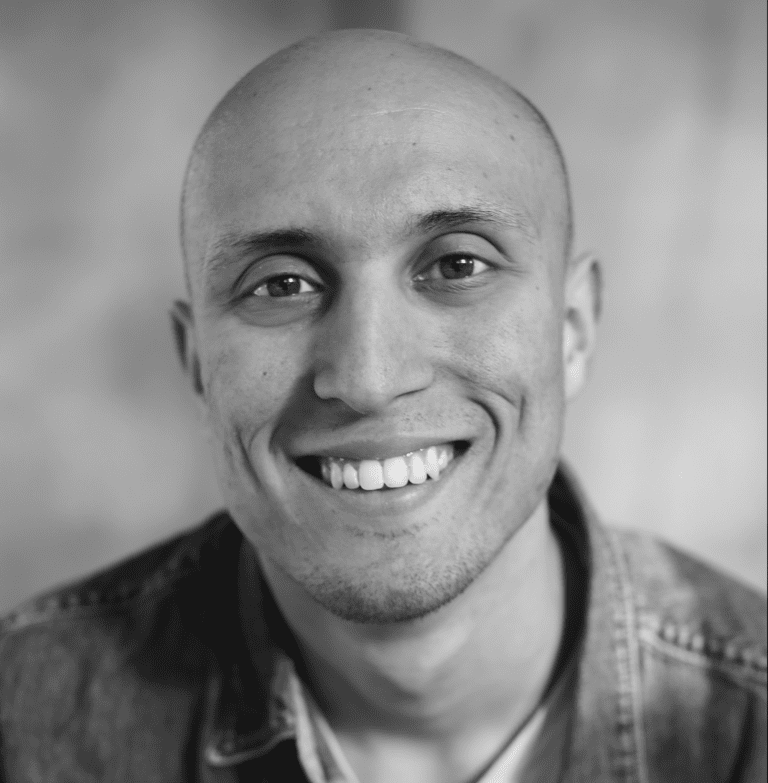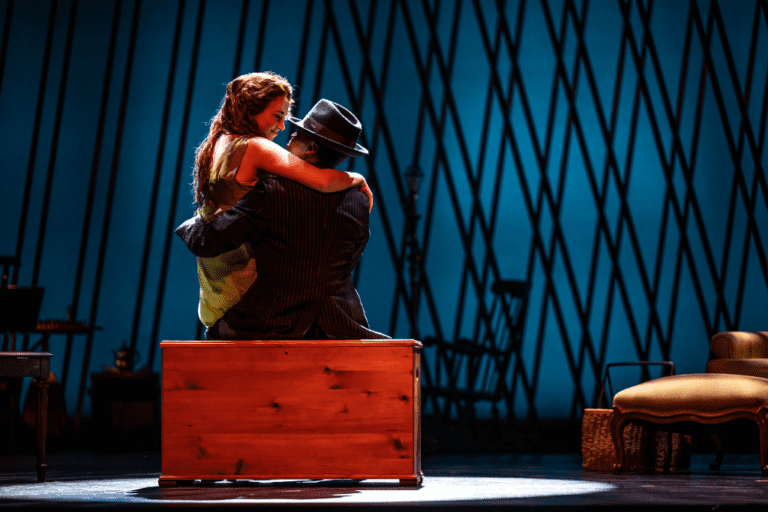Why I’m tired of cripface in Toronto theatre
Before the 2023 Toronto Fringe Festival, I applied to audition for a dance-theatre show. A producer sent me an email asking for details about my disability, details that were none of their business and did not pertain to the role I was auditioning for.
When they heard it was a visible disability, I was not given the audition.
The same year, I saw no fewer than five productions in Toronto, both professional and indie, featuring performers engaging in cripface.
Cripface is when an able-bodied, or able-passing, person performs a disabled experience that isn’t their own. Local theatre companies large and small, indie and established, have engaged in this practice.
In 2023, I saw a show where an able-passing person played a visibly disabled person in a pivotal role. This was the type of role that perfectly fit me, a mid 20s, visibly disabled male. It was the type of role that could have been a big career opportunity for me or other visibly disabled actors. But instead, this role went to an able-passing person. The show also contained the disabled character making numerous references to how they are treated as a result of their disability, references that included disability slurs, lines that would be more powerful in the mouth of an actual visibly disabled person. I later learned the company never auditioned, or had any intention of casting, a visibly disabled person for that role.
Cripface is when an able-bodied, or able-passing, person performs a disabled experience that isn’t their own. Local theatre companies large and small, indie and established, have engaged in this practice.
This year, during a comedy show at the Toronto Fringe, a comedian got up on stage and during her set and openly mimicked a “crip walk,” deliberately making fun of the way people like me walk. The Fringe audience, many of them theatre community members, loved it. I had been excited for this event as a lover of comedy and a fan of Fringe events, and yet there I was in the audience, feeling angry and dehumanized .
It became clearer to me in that moment that the Toronto theatre scene does not view the visibly disabled as human, and that dehumanizing us is not only acceptable, but funny. Multiple recent comedy and improv shows throughout the city have used words like “retarded,” “gimp,” and “crippled.” This trend of dehumanizing and mocking disabled people showcases that ableism, as well as disability, physical, and social segregation, are accepted forms of discrimination in this city’s theatre scene. Cripface, however, is by far the most common way able-bodied and able-passing people in Toronto theatre degenerate, ignore, and take from disabled people.
In late 2023, I saw a professional production from a major Toronto theatre company. I was excited to see the show, as it was written by an established playwright who I was a fan of and from a company I like. But the show I saw featured images of disfigured and visibly disabled people in cages, being walked on leashes and treated like animals, once again featuring a cast of able-passing actors. The show drew upon images of the freak shows and human zoos that disfigured, visibly disabled, and BIPOC peoples were subjected to in the past. Again, the show included no visibly disabled actors in roles that could have been pivotal for them.
There was a play this last summer in which an invisibly disabled actor used her connection to disability to erase a character’s visible disability. The show excused this casting by saying the actor’s experience as a woman was the same as being visibly disabled. As far as I know, at no point during the creation of this show were visibly disabled people consulted or considered for this show or part. The word “deformed” was used in the show, and there was no credited disability consultant. This show was explicitly about the visibly disabled experience, yet that was erased in favour of benefitting the interests of the visibly able-bodied actors.
Cripface is a sticky topic — it often seems no one is talking about it in large theatre institutions.
Cripface is a sticky topic — it often seems no one is talking about it in large theatre institutions. To that end, some of the worst forms of ableism I have ever experienced in this industry have come from invisibly disabled people. There’s an unspoken phenomenon in the greater disabled community of invisibly disabled people openly discriminating against, abusing, pushing aside the voices of, and not viewing as fully human those of us who are visibly disabled. This manifests in the Toronto theatre scene as erasing visibly disabled voices: Not listening when we speak, refusing to acknowledge the inherent privilege that comes with being seen as able-bodied, and taking visibly disabled roles and giving them to able-passing people.
I want to make it clear: When I call out this form of cripface, I’m not talking about all invisibly disabled people, nor am I saying they are not disabled. There are many invisibly disabled who are in community with, good advocates for, and deeply invested in disability justice. But in theatre, there are many who use disability as a way to bolster their own social capital, but who don’t actually care about standing up for and representing all disabled people.
Any time someone plays a character written with a disability they do not have, it’s cripface.
Cripface can happen in many ways. The most common way in Toronto theatre is by casting a visibly able-bodied person play a visibly disabled person; however, any time someone plays a character written with a disability they do not have, it’s cripface. I have Cerebral Palsy, but if I were to play someone with Down syndrome, that, too, would be cripface.
Let’s use Richard III as an example.
To get this out of the way: Unless you are visibly disabled, Richard is off-limits. Period. Anything else is cripface. His story, although told from a deeply ableist perspective, is intrinsically about the visibly disabled experience. It’s explicitly about the discrimination he faces as a visibly disabled person and his reaction to it.
Yet we have seen theatre companies, collectives, and actors, in this city and beyond, use Richard as a way to uplift their own companies and personal opportunities, while simultaneously taking from a community that struggles to find the same chances that able-passing artists so often get for free. In these instances, our bodies and experiences are props, to be used when useful and disposed of when not.
Sometimes people ask me why I didn’t speak up about these behaviours sooner.
But really, what’s the point? No one gets cancelled for ableism.
Cripface and more general disability discrimination is a common occurrence throughout this city’s theatre scene. It crosses race and gender lines. It is found in BIPOC communities and queer spaces. My question to able-bodied and able-passing theatre artists of colour in Toronto is: If theatre companies were telling BIPOC stories without BIPOC actors, would you stand for it? To able bodied and able-passing queer theatre artists: Would you stand for the same approach to your stories?
I hope to call cripface an ugly part of the past.
Perhaps things would get better if more theatre companies hired visibly disabled people both on and off the stage, commissioned works written by visibly disabled artists, and hired disabled consultants for stories relating to disability.
Perhaps things would improve for visibly disabled artists if Toronto theatre valued disabled people’s dignity, instead of treating accommodations as a checkbox to be ticked.
I have come to expect casual disrespect, social segregation and microaggressions in theatre spaces, which is why I don’t go to theatre in the city as much as I used to. But I hope that will not be the case in the future, and I hope to call cripface an ugly part of the past.










Sure, get angry, but then put together a group of actors with disabilities and do your own material. I ran the Rolling Thunder Theatre Company from 87-90, touring the province and beyond, and there is a strong need for more performances that are inspired by the world of disabilities. But please. use comedy AND drama.
I love the article very much. If you can’t find work then you need to write your own play with other actors with a disability or write a play with anyone who is open to work with directors who are open to work with you.
Great piece, Sivert. Nice work.
And are these theatre companies getting funding from government agencies and sponsors because of the DEI policies? You bet they are-and are they being held accountable? Not really.
Thank you, Sivert Das.
Folx within our vocation who live with visible disabilities should be considered for all roles.
And, I wish I was a theatre producer, because one the most germinal and successful Canadian-authoured plays of the last fifty years deserves a major revival. CREEPS (1970/71) by David Freeman, a playwright with Cerebral Palsy. It not only put the new then-alternative Factory Theatre ‘on the map’ but also inspired the founding of the Tarragon Theatre to extend its run.
A remarkable now-historiographic play that changed theatre on this land.
A newly re-imagined production of this script cries out to be produced with the four main characters played by visibly disabled actors…
Say it louder for the people in the back